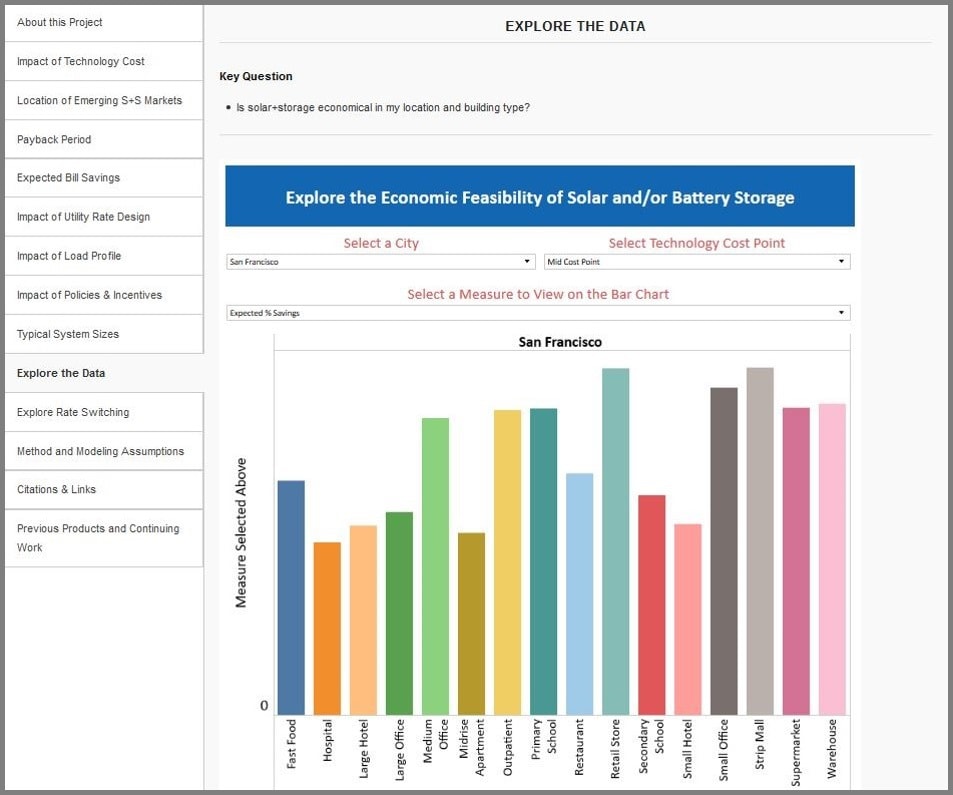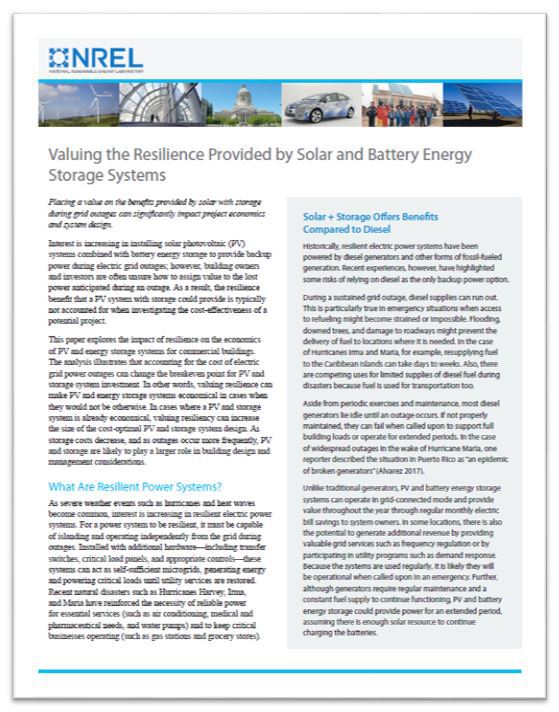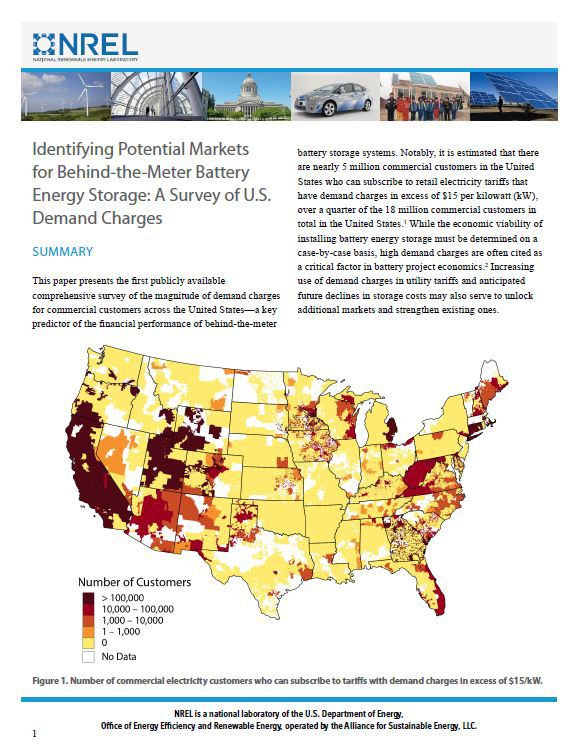Solar+Storage Optimization
Reducing Barriers through Cost-optimization and Market Characterization
The Solar+Storage Optimization Project, a joint endeavor of Clean Energy Group and the National Renewable Energy Laboratory, was a two-year research effort to elucidate the emerging market for distributed solar paired with battery energy storage in commercial buildings across the United States. The results provide insight into the near-term and future solar and solar-plus-storage market opportunities as well as the variables that impact the expected savings from installing behind-the-meter systems. This project was funded under the U.S. Department of Energy’s Solar Energy Technologies Office.
PROJECT PUBLICATIONS
Solar+Storage: Understanding Commercial-Scale Project Economics through Cost-Modeling
This interactive cost-modeling tool explores the following questions: Is solar+storage economical in my location? Which commercial building types are most likely to see cost-savings from solar or storage? Where are the emerging markets for solar+storage? Access this tool at: https://openei.org/wiki/Solar%2BStorage
Valuing the Resilience Provided by Solar and Battery Energy Storage Systems
January 2018 by Joyce McLaren, Seth Mullendore
Researchers from NREL and Clean Energy Group found that placing a monetary value on the ability of solar+storage to avoid losses during grid outages can significantly impact project economics and system design. Using data from Southern California Edison, researchers analyzed the economic case for solar+storage for three customer types (school, office building, and hotel) in Anaheim, California. In each case analyzed, larger PV and battery storage systems were found to be economical when the value of resilience is accounted for.
See also: Webinar – Valuing Resilience: Exploring the Role of Solar+Storage in Grid Outages (March 2018)
Identifying Potential Markets for Behind-the-Meter Battery Energy Storage: A Survey of U.S. Demand Charges
August 2017 by Joyce McLaren, Seth Mullendore
This collaborative paper by NREL and Clean Energy Group details the first comprehensive public analysis of the potential size of the commercial behind-the-meter battery storage market in the United States. The researchers analyzed representative building load profiles against more than 10,000 utility tariffs, finding that over 25 percent of commercial customers across the country may be able to cost-effectively reduce their utility bills with battery storage technologies today. The paper presents these findings, grouped by utility service territory and state, and illustrated in a series of maps and tables.
See also: Webinar – Identifying Potential Markets for Commercial Behind-the-Meter Battery Storage (September 2017)
Battery Energy Storage Market: Commercial Scale, Lithium-ion Projects in the U.S.
October 2016 by National Renewable Energy Laboratory (NREL)
This slide deck presents the results of data collection on the commercial-scale li-ion battery energy storage market. This information was collected to inform the inputs and assumptions for NREL’s solar+storage optimization modeling in FY17.








